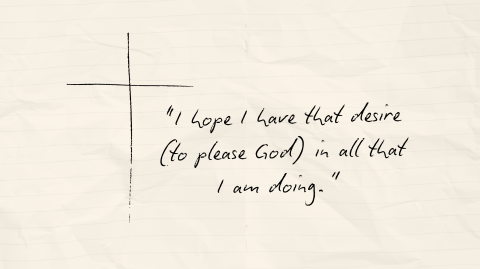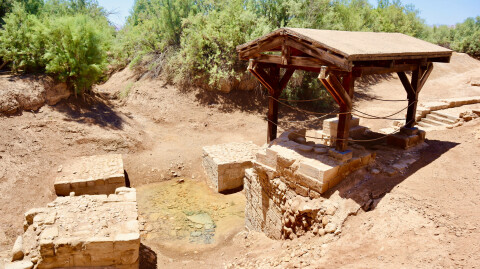TLDR: Palm Sunday is the start of Holy Week. This blog discusses some of the symbolism of what happened on that day when Jesus was welcomed as a king into Jerusalem.
The Feast of Palms marks the beginning of Holy Week. It is used by all four evangelists, Although each of them adds or omits information, creating a unique narrative:
|
John 12:12-19 The reference to Bethphage is omitted.
No mention of the Mount of Olives
No mention of Jesus sending the disciples to get a donkey or colt. He just “finds a young donkey.”
Quotes Zechariah 9:9 as the others, but adds, “His disciples did not understand these things at first; but when Jesus was glorified, then they remembered that these things had been written of him and had been done to him.”
Adds a comment that some of the people on the street welcoming Jesus “had been with him when he called Lazarus out of the tomb.”
Adds a comment about the Pharisees saying to one another, “Look, the world has gone after him!” |
Luke 19:28-40 Mentions both Bethphage and the Mount of Olives as the starting point for the entrance.
Gives instructions as to what to do if the owner of the donkey objects. Untie it and bring it
Does not quote Zechariah 9:9
Adds a comment about the Pharisees asking Jesus to stop the followers from chanting “Hosanna!”
Adds a response from Jesus, “I tell you, if these were silent, the stones would shout out.” |
Matthew 21:1-11 Mentions both Bethphage and the Mount of Olives as the starting point for the entrance.
Gives instructions as to what to do if the owner of the donkeys objects. But adds the mother and the colt, “Untie them and bring them to me.”
Quotes Zechariah 9:9, “This took place to fulfill what was spoken by the prophet, saying, … ‘Behold, your king is coming to you, humble, and mounted on a donkey, on a colt, the foal of a beast of burden.’”
Adds a comment that “when he entered Jerusalem, the whole city was stirred up, saying, ‘Who is this?’ And the crowds said, ‘This is the prophet Jesus, from Nazareth of Galilee.’” |
Mark 11:1-11 Mentions both Bethphage and the Mount of Olives as the starting point for the entrance.
Gives instructions as to what to do if the owner of the donkey objects. Only one donkey.
Adds to the chant, “Blessed is the coming kingdom of our ancestor David!”
Adds a comment about the entrance ending at the Temple.
He looks around “at everything, as it was already late, he went out to Bethany with the twelve.” |
All four have a few elements in common to remember Jesus’ triumphant entry into Jerusalem on the last week of his life. Jesus rides a donkey, in fulfillment of a prophesy. People spread their clocks and tree branches on the ground, welcoming Jesus as a King. And the crows sing “Hosanna” to the king in reference to Psalm 118:25-26. Beyond these common movements, each narrative has differences that make their account unique to its respective Gospel.
Three of the four accounts quote, Zechariah 9:9, “Rejoice greatly, Daughter Zion! Shout, Daughter Jerusalem! See, your king comes to you, righteous and victorious, lowly and riding on a donkey, on a colt, the foal of a donkey.” The mention of donkey seeks to create a difference between the kind of King Jesus is. The kings of the nations enter their cities on horseback, symbolizing military power and dominance. Jesus, on the other hand, rides a donkey, a symbol of peace and humility.
The closest comparison of this triumphant entry is “The Roman Triumph.” This is a glorious march into a city after military victory. “On the day of his triumph, the general wore a crown of laurel and an all-purple, gold-embroidered triumphal toga picta ("painted" toga), regalia that identified him as near-divine or near-kingly. In some accounts, his face was painted red, perhaps in imitation of Rome's highest and most powerful god, Jupiter. The general rode in a four-horse chariot through the streets of Rome in an unarmed procession with his army, captives, and the spoils of his war. At Jupiter's temple on the Capitoline Hill, he offered sacrifice and the tokens of his victory to Jupiter.” (Reference Here and Here).
The use of personal clothing to cover roads and Palm Branches to greet the dignitary also corresponds to ancient military custom to welcome a king or important person into a city. It is a symbol of reverence and submission to the authority of the entering leader. All four evangelists quote portions of Psalm 118:25-26, “Save us, we beseech you, O Lord! O Lord, we beseech you, give us success! Blessed is the one who comes in the name of the Lord. We bless you from the house of the Lord.” The word “Hosanna!” conveys this cry for protection. The expression “Save us, Lord!” which would normally be directed at an emperor or king, is now used to welcome Jesus into Jerusalem. The evangelists want to contrast the arrogance of the Roman Emperor or King Herod to the humility of Jesus, the Messiah sent by God for the liberation of the world.
The events of Palm Sunday were so important, historically and symbolically, that the Book of Revelation 7:9 uses this story to give us a glimpse of heaven, “After this I looked, and there was a great multitude that no one could count, from every nation, from all tribes and peoples and languages, standing before the throne and before the Lamb, robed in white, with palm branches in their hands.”
It is a bit ironic that Passion Week begins with a royal welcome, leads to the trial of a dangerous enemy, and ends with the resurrection of the Son of Man. No human power can thwart God’s plans for the liberation of the world in Christ Jesus. The Messiah remains victorious at the end of this horrible week, and we who walk still through the valley of the shadows of death, are reminded that in Christ we will also be victorious when our own journey on this earth is over. No human power could have the last word. Only God has the last word, and for this, I am grateful. May our Lord continue to bless us, Amen!
Fr. Roman +





